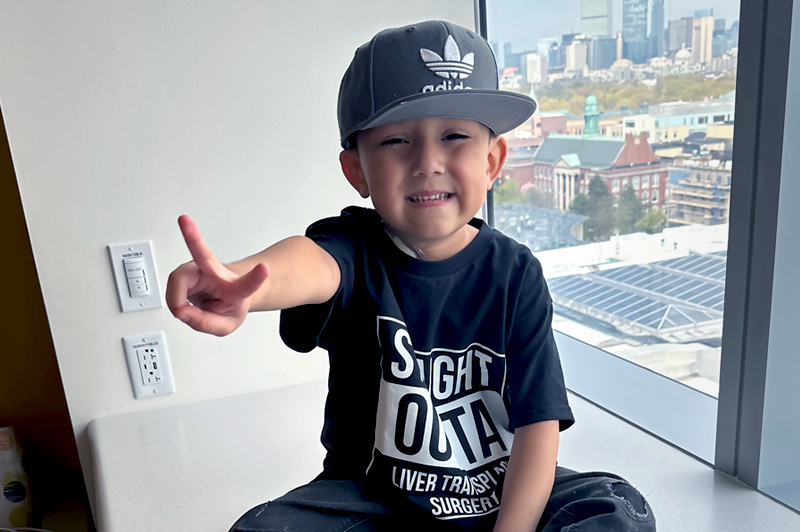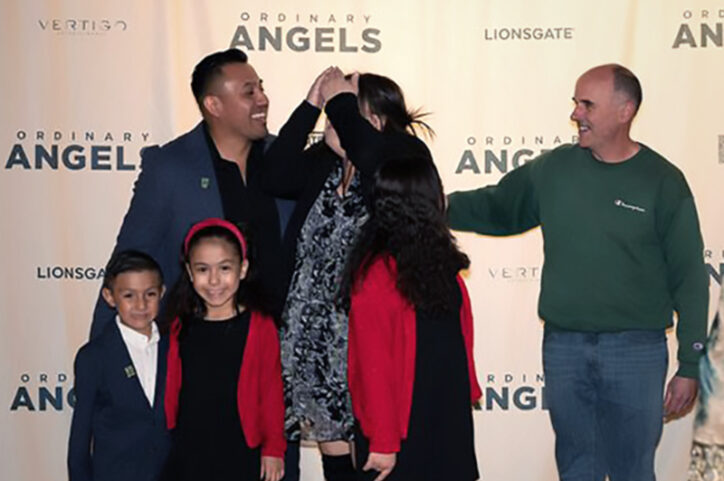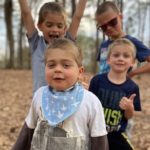An act of kindness — Raul and Larry’s journey to a non-directed transplant donation

Acts of kindness can come in many forms, like volunteering or donating to a charity of choice. At 52, Larry loves giving back to his local community in Vermont, which is why he works in law enforcement. However, he has taken these thoughtful acts of kindness to another level — he’s donated one of his kidneys and a part of his liver to two different people he had never met. His motivation? Larry says he just wanted to help others.
“The first was a directed donation — meaning I knew what was needed and who would get my kidney — but I didn’t know them personally,” he explains. “For my liver, I decided to do a non-directed donation — so instead of knowing the name of who would receive the piece of my liver, I only knew that I was a match for a child in need.”
For Larry, the reason was simple. “I knew I was healthy and thought that if I could make someone else almost as healthy as I am, why not?”
The road to donating
Larry underwent five months of testing in 2021 before he was approved to donate his kidney. “The call came two days after my birthday and I thought, ‘Wow — now that is a birthday gift,” Larry remembers.
The recovery process was intense, but Larry says it was nothing in comparison to what his recipient must have experienced before the donation. “I knew that the recipient was an adult who had kidney disease for almost eight years, and now he’s able live without that pain,” So, when he heard that he had the chance to help a child with his second donation, he was thrilled.
A year after his kidney donation, Larry was medically cleared to donate again and began testing for his next donation. During this time, he learned that the anatomy of his liver would not be safe to donate to an adult but would be a great fit for a child in need.
When Raul enters the story
While Larry was preparing for his liver donation, a little boy in Connecticut was battling a rare disease and needed a life-saving operation. Raul was born with a urea cycle disorder, a rare disease caused by a faulty enzyme within the urea cycle — the way the body converts excess ammonia into a type of molecule, called urea, in liver cells. Without aggressive treatment including special nutrition formulas, very low protein foods, and multiple medications, high levels of ammonia build up in the blood and brain leading to brain injury. Although this faulty enzyme is in all parts of the body, it can be cured with a liver transplant.
Raul’s mom, Marie, worked with doctors in their home state to have a gastrostomy tube (G-tube) connected to his stomach so they could give him all the medications and special formulas he needed.
Raul was stable until he turned 3 years old, when his bloodwork showed that he was no longer responding to his aggressive treatment plan — a red flag that his body was not clearing ammonia properly and his brain was being affected. The only option left was to receive a liver transplant to fully treat and recover from this disease.
Raul and his family came to the Boston Children’s Pediatric Transplant Center and he was placed on the liver transplant list. Three months later, the piece of Larry’s liver was donated to Boston Children’s and Marie got the call that there was a match for Raul. They drove to Boston Children’s and Raul underwent successful transplant surgery with Dr. Heung Bae Kim and his team of surgeons. Raul has been closely monitored by Dr. Scott Elisofon and his team of pediatric liver specialists.

Finding Larry
A few months after Raul’s transplant, Marie mailed a handwritten donor letter to try and thank his organ donor. As a result, Larry was given her contact information and was told by the transplant team that he could reach out to the family if or when he was ready — which he eventually chose to do online.
Raul’s family and Larry recently met this past Valentine’s Day in Connecticut — providing closure to such an emotional journey for both. With Larry’s donation, he has helped Raul thrive in ways that Marie didn’t think possible. Now age 4, he’s able to eat foods that he couldn’t previously, he’s making friends in kindergarten, and “he’s finally able to just be a kid,” Marie says.
For Larry, being a non-directed organ donor has meant helping others that he never met and allowing them a chance at a healthier life. “I’d do it again if I could, especially seeing how much it has helped Raul,” he says.
Learn more about the Pediatric Transplant Center and register to be an organ donor.
Related Posts :
-

From Florida to Boston and back again: Reagan's liver transplant journey
Reagan, 18, is gearing up for her freshman year of college this fall, and she has a solid idea about her ...
-

One day on the field, admitted to the ICU the next: Rob's liver transplant journey
When you’re a teen, it’s not very common to worry about what’s going on inside your body — ...
-

Running the Boston Marathon with a purpose: Ben's liver transplant journey
Ben is no stranger to sports — in fact he’s probably the most excited when he’s able to get ...
-

From Virginia to Boston for a kidney transplant: Joshy’s story
Joshy Buchheit is a lot like most 4-year-old boys. He loves playing in the mud, riding his scooter, and keeping ...





